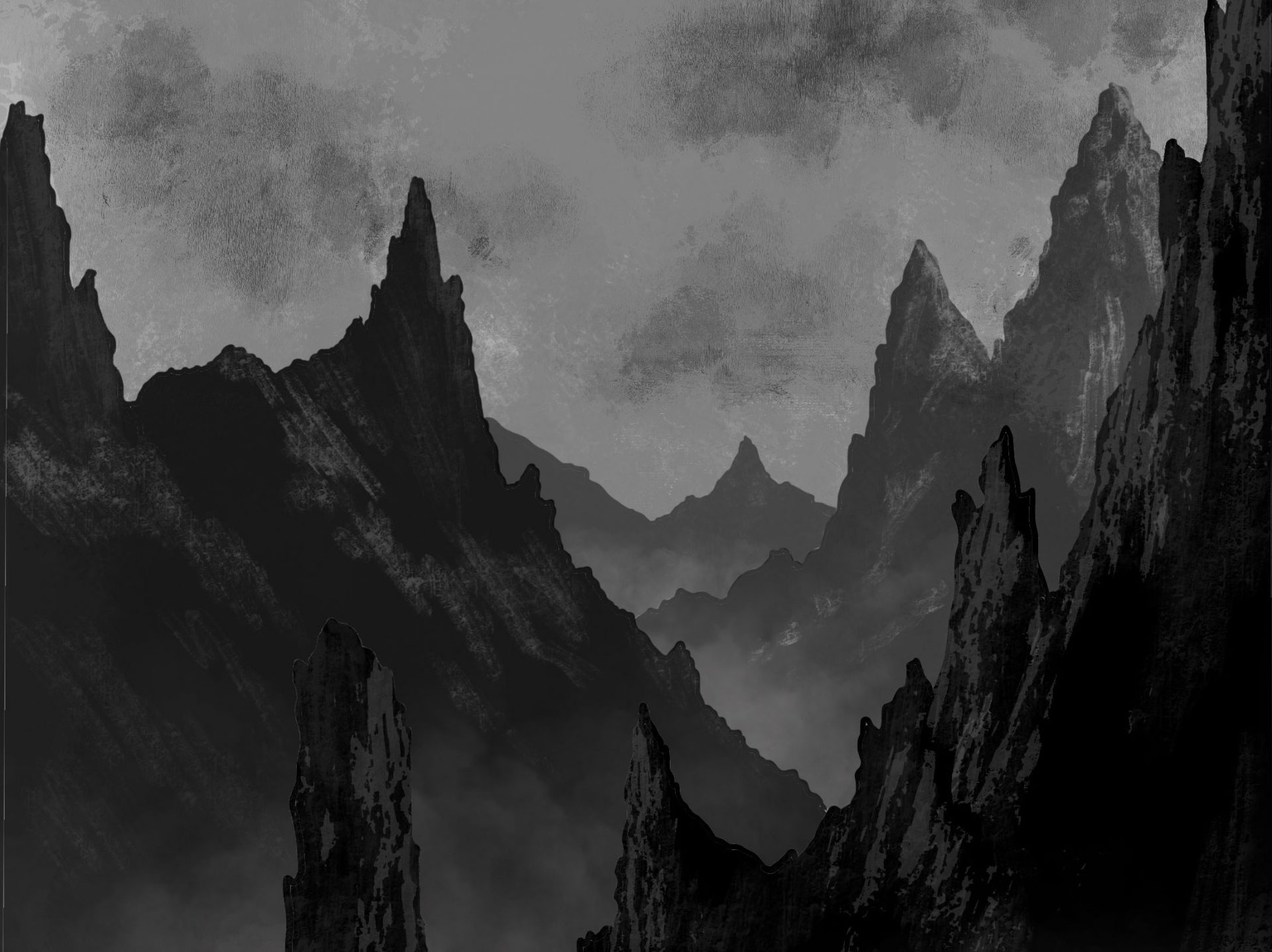Understanding layers in Photoshop was one of the things that seriously changed the quality of my work. As I said previously in this Procreate post, the layer tool is used by artists with almost every project. Learning how to use them is probably the most important thing you can do to improve your digital art skills.
This post will cover how layers work and the basics of creating and using layers in Photoshop.
What is layer ?
When it comes to traditional art, you can’t suddenly move your objects behind or in front of other objects once they are drawn on your paper. Instead, you have to decide how things are going to be positioned and draw them down accordingly. If you need to make any changes, you’d have to redo your artwork from the beginning.
However, with digital art, things work differently. The layer feature gives you the possibility to draw behind or in front of other elements, reorganize, move, and play around with how they are positioned on your canvas. Moreover, you can make your objects disappear so that you can focus on your background object without distraction. This feature lets you work on your art in pieces and easily experiment with different arrangements.

To put it simply, think of layers as transparent panes of glass stacked on top of one another, which allow different parts of each layer to show through. With this feature, you have greater flexibility and control over your digital artwork.

Understanding layers in Photoshop
Why to use layers?
At this point, you may be wondering why you even need to use layers. After all, wouldn’t it just be easier to work with everything in your image at once? However, the truth is that layers provide an amazing amount of flexibility and control that would otherwise be difficult to achieve. This is because you can edit each layer independently from the rest of the image, making it easier to make changes or experiment with different designs.
One of the biggest advantages of using layers in digital art is that each of them can be edited without affecting the others. This is particularly useful for designers who want to add colors, effects, graphics, and text to their original image without altering the original image. Without layers, every single change you made would permanently influence the entire image, and you would have to start over from scratch if you made a mistake.
When working with layers, it’s important to turn individual layers on and off to see how they affect the overall image. This helps you better understand how different layers interact with each other and how they contribute to the final product.
Furthermore, the order of your layers in Procreate will determine which layers, and any objects drawn on them, are behind or in front of each other. Layers that are closer to the bottom are technically behind any layers on top of them. If you want to move an object behind or in front of another object, you simply need to move it up or down in your list of layers accordingly.

Understanding layers in Photoshop
How to use layers?
Where are the layers in Photoshop ?
Layers are arranged in a stack within the Layers panel, typically found in the bottom right of the work area. However, if the Layers panel is not visible, you can easily access it by choosing Window > Layers from the menu bar.
Once you have the Layers panel open, you can easily create, delete, duplicate, merge, and adjust the opacity of your layers. You can also rename your layers to help keep your design organized and easy to manage. Additionally, the Layers panel provides a quick and easy way to move layers up or down in the layer stack, allowing you to control the order in which objects appear in your design.

How to create a new layer in Photoshop ?
To create a new layer in Procreate, you have a couple of options. First, you can simply click on the New Layer button located in the Layers panel (the little square with the + inside). This will create a new layer using Normal mode with 100% opacity, which will be automatically selected and appear in the panel above the layer that was last selected.
Alternatively, you can create a new layer and specify a name and additional options by choosing Layer > New > Layer from the menu bar. This method allows you to customize your new layer and gives you more control over its properties.

How to select a layer in Photoshop ?
If you just want to select a layer, click directly on the layer you want to work on.
If you want to select all the objects within a layer, you can put a selection around every object on that layer by holding the Command key (PC: Control key) and clicking on the Layer’s name. This way, you can paint or draw only on the selected areas.
You can also use the auto-select tool. For this, you first need to have the Move Tool selected. You can select it from the top of the toolbar, or by pressing the letter “V” on your keyboard. With the Move Tool active, Auto-Select is found in the Options Bar. In the most recent versions of Photoshop CC, Auto-Select is turned on by default. In earlier versions, you can turn Auto-Select on by clicking inside the checkbox. Then, to automatically select a layer, just click on the layer’s contents in the document.

How to select two or more layers ?
In order to select multiple layers, you can hold the Command key and click on the layers you want to select.
If you want to select multiple layers from the following sequence, you can hold the Shift key, click on the first and last layers of the sequence and it will select all layers in between.

Move a layer above or below another layer ?
The stacking order determines whether a layer appears in front of or behind other layers.
You can also choose Layer > Arrange, and then choose Bring To Front, Bring Forward, Send Backward, or Send To Back.

How to move a layer to another canvas ?
Right click on the layer name and select Duplicate Layer. You can also click on Layer > Duplicate Layer.
When the dialog pops up, change the destination document from your existing document to your target document.

How to create a new group of layers ?
There are different ways to create group from layers in Photoshop:
Firstly, you can select multiple layers in the Layers panel. Click on Layer > Group Layers.
Secondly, you can select multiple layers in the Layers panel. Right-click on them. Choose Group from Layers.
Thirdly, you can select multiple layers in the Layers panel. Click on the folder icon at the bottom of the Layers panel to group the layers.

How to hide a layer ?
In the Layers panel, click the eye icon to the left of a layer to hide its content. Click again in the same spot to reveal the content. This is a useful way to remind yourself what’s on a particular layer.

Understanding layers in Photoshop
How to lock your layer ?
You can fully or partially lock layers to protect their contents. When a layer is locked, a lock icon appears to the right of the layer name, and the layer cannot be edited or deleted.
Click the Lock Transparency icon in the Layers panel, to lock the transparent areas of the layer, so that no painting occurs in them. Click the icon again to unlock.

How to duplicate a layer in Photoshop ?
There are different ways to duplicate a layer :
Firstly, select one or more layers in the Layers panel, click on Layer > Duplicate Layer.
Secondly, right-click the layer name or thumbnail, and choose Duplicate Layer.
Thirdly, you can select the layer and drag it to the New Layer button at the bottom of the Layers panel.
How to delete a layer in Photoshop ?
Deleting layers you no longer need reduces the size of your image file, so it’s important to get rid of them.
Firstly, you can select one or more layers or groups from the Layers panel. Choose Layers > Delete > Layer.
Secondly, you can select one or more layers or groups from the Layers panel. Click the Delete icon at the bottom of the Layer panel.
Thirdly, you can select one or more layers or groups from the Layers panel. Right-click, choose Delete Layer.

How to change the layer opacity ?
A layer’s opacity determines the degree to which it obscures or reveals the layer beneath it. A layer with 1% opacity is nearly transparent, while a layer with 100% opacity is opaque. Transparent areas remain transparent regardless of the opacity setting.

How to save a picture without background in Photoshop ?
If you want to export your artwork with a transparent background you need to save your image as a PNG. JPEG doesn’t support transparency, so your transparent layer will show up as white.
But before saving your image as a PNG, you need to delete or hide the background layer which is at the bottom of the Layer panel.

How to name a layer in Photoshop ?
To rename the new layer, double-click on it and type a new name.
You can also click on Layer>Rename Layer.

How to merge layers in Photoshop ?
There are different ways to merge layers :
Firstly, you can select the layers you want to merge from the Layers panel. Choose Layers > Merge Layers.
Secondly, you can select the layers you want to merge from the Layers panel. Right-click, choose Merge Layers.

How to flatten ?
Flattening is merging all visible layers into the background layer to reduce file size.
The easiest way to do it is to click on Layer > Flatten Image.
You can also right-click on any layer. Then choose Flatten Image.

What are blend modes in Photoshop ?
A blending mode is an effect you can add to a layer to change how the colors blend with colors on lower layers. You can change the look of your image simply by changing the blending modes.
The blending mode of a layer is set to Normal by default. Anything drawn with 100% opacity will appear opaque, so the layer underneath isn’t visible. You can change how the colors blend with lower layers by changing the blending mode.
To change the blending mode of a layer, simply select the layer and change the mode in the drop-down box.
For example, In Normal mode, the color is simply placed on top of the color of the layer below. Darken mode compares the colors of the blending layer and the base layers, and keeps the darker colors. The Multiply mode multiplies the colors of the blending layer and the base layers, resulting in a darker color etc. etc.
Pretty much no one knows what most blend modes do. Just try every blend mode until you find a pleasing result. The outcome may surprise you!

Understanding Layers in Photoshop
In Conclusion,
Once you become comfortable with layers, you’ll start using them all the time as this allow you to work more efficiently and effectively. This is particularly useful when working on complex or detailed designs, where making changes to one element may have a ripple effect on the rest of the image. With layers, you have the ability to work on different parts of your design separately and then bring them all together into a cohesive whole.
As an architect, illustrator and designer, I work with Photoshop and Procreate all the time and I always use the layers. There’s a lot more to learn from them, but if you’re just starting out, focus on playing around with the settings and have fun.

Understanding layers in Procreate


